What We Learned From Dealers at NADA 2018

Another National Automobile Dealers Association (NADA) convention has come and gone, and for attendees, it was a whirlwind of information, sensory overload, networking, and for some, a few happenings in Vegas that will stay in Vegas. During convention hours, when dealers weren’t attending workshops, franchise meetings, or keynote speeches, they were probably wearing out their shoe leather traversing the Las Vegas Convention Center’s cavernous North and Central Halls, checking out the hundreds of exhibitors.
For it’s in the exhibition halls that many of the solutions to the challenges of modern automotive retailing reside. It’s also the place where dealers are likely to be expressing the greatest needs, concerns, and frustrations they experience in running their businesses.
Automotive vendors are the ones with their ears to the ground when it comes to gauging what today’s most successful, technologically progressive dealerships need to be successful — now and in the future. At NADA 2018, these companies weren’t just touting their latest products and services — they were listening to what dealers were saying, both explicitly and implicitly.
They heard wants, needs, complaints. They heard comments like “I bought this software system, and it’s not helping our business” or “why doesn’t a product that does what I need exist?” The companies that provide dealerships with their technology and services often had answers to these concerns immediately, but when they didn’t, the sales pitch ended and the learning began.
Without learning what dealers are concerned about now or need for the future, vendors risk falling behind and not having answers at next year’s show . . . or even six months from now. To find out what they learned, Dealer Marketing Magazine asked automotive vendors in various dealership categories what they heard from dealers at the show — companies at the cutting edge of digital marketing, CRM, social media, lead generation, dealership communications, artificial intelligence, video marketing, F&I, and more.
On the following pages, nine leaders of both industry-leading and up-and-coming vendors share what they learned from dealers about both the challenges that can be addressed now, and the ones that will shape the products and services of the future.
 Chase Abbott
Chase Abbott
Vice President, Sales
VinSolutions
What we learned: Need for mobile functionality and cross-rooftop CRM capabilities One of the most common topics of conversation with dealers on the floor at NADA was the need to adapt in today’s evolving car-buying landscape. This, of course, is not a novel concept for dealers. But there was a new sense of urgency this year. This was the first NADA show where it seemed like dealers were really beginning to feel the heat. Feeling that pressure is OK, as it provides many dealers the push they sometimes need to take action and react to the changing marketplace, with the aim to remain relevant and competitive in buying and selling cars.
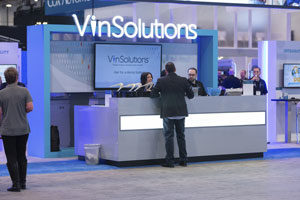
But with that change in approach comes a change in the tools dealers need to do their best work, and the conversations we have with dealers on the NADA convention floor are invaluable in helping us effectively meet dealers’ evolving needs. Recently, we’ve heard two big needs from our dealers — improved mobile functionality and cross-rooftop CRM capabilities — and this year we were proud to launch new solutions to those needs at NADA: Enterprise Customer for Connect CRM and our new Connect Mobile app. We prioritized on delivering the tools that aligned with the needs of our customers — dealers — and the shifts in the automotive retail industry. Whether it’s a seamless CRM or easy-to-use mobile technology, the team at VinSolutions is focused on providing dealers with the tools they need to build and nurture key consumer relationships for 2018 and beyond.

Andy Moss
CEO
Roadster
What we learned: Need for clear, comprehensive approach to digital retailing At NADA 2018, digital retailing buzz was front and center, with an influx of vendors announcing their version of digital retailing to the industry. A rising tide lifts all boats, so it is definitely an exciting time for Roadster to be offering our omnichannel commerce solution. In speaking with dealers throughout the show, it became clear that the waters are fairly muddy around what digital retailing actually means. Is it a payment calculator? Is it getting preapproved? Or, is it taking the transaction all the way through to the sale? At Roadster, we believe that digital retailing is a sales process from start to finish, so we offer tools to help a dealership service customers from discovery to sale, whether that is online or in-store. Retailing solutions, like Express Storefront, benefit every department and can lead to significant time savings for customers and dealership personnel. So, while it is exciting to contemplate incremental traffic to an online storefront, it is also beneficial to have the tools in your dealership that connect the online world to the activities your team is doing with customers in-store every day.

Bill Wittenmyer | Partner
ELEAD1ONE
What we learned: Need to retain control of the sales process in digital era Our big focus at NADA was digital retailing, so we heard from a lot of dealers who are concerned this trend will mean losing control of the sales process. We don’t see that happening. Over 80% of customers still want to visit dealers for test drives and to sign paperwork. It all comes down to whatever is the most convenient for customers. Time is relative, and people value their time at home differently than they value their time spent at a dealership.
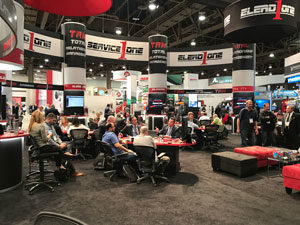
If you can help them complete some of the process while they’re at home, you are providing a much better experience. Buying a car is still a complex process. Customers will always have questions, so be prepared to walk them through the process remotely. Also look for a digital retailing solution that’s customizable to your current sales process. On the service side, many dealers are still unsure how investments in technology will pay off.
They’re making money, so why change things? The problem is that staying the same equivocates to sliding backward. As independent shops, chains, and large dealer groups all shift to streamlining the service process, doing things the same old way will result in less future business. Ultimately customers choose the best experience, so I encourage dealers to really think about how they can differentiate themselves on the service side. Stop marketing discounts and coupons, and start marketing a better experience.
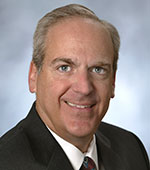
Steven Barnett | Founder
DealerTEL
What we learned: Need to attract and maintain millennial talent We really heard from dealers about the importance of attracting millennial talent as being one of the biggest hurdles in automotive right now. While the vehicles we as an industry sell are sleek and tech-laden, the processes and equipment within our own dealerships are lagging. The key to attracting millennial talent is making our tech just as modern as any other industry.
One way to help make this happen is to create a mobile business for them. Millennials have grown up in an era where there is no desk phone or desk computer. Everything happens on the go and right on their smartphone. We need to be giving these employees the ability to work from wherever they are, whether that’s on the lot or at the neighborhood grocery store.
The key to this tech, however, is finding a way to give them a mobile work station while retaining the information that flows through the phone. That’s why it is so important for dealers to find technology that enables them to own and retain any and all information on an employee’s phone, whether that be their office phone or smartphone.
We have some hurdles to getting the next generation of salespeople, F&I managers, and tech advisors on board, but with the amount of turnover we see in this industry, I think our main objective should be ensuring the dealership owns the phones and retains the information flowing through them in-house.

Valerie Vallancourt | Vice President of Marketing
Outsell
- What we learned: Need for consolidation, AI, customer retention, and ROI NADA 2018 was Outsell’s best NADA show to date — our booth was consistently packed with dealers looking to amp up their digital marketing. Among their biggest requests:

- Dealers are looking to consolidate their vendors and marketing efforts — most are seeking platforms with multiple capabilities that would help them reduce the number of vendors they interface with.
- They are asking for artificial intelligence by name, and especially interested in AI-driven analytics solutions.
- They recognize that customer retention is an issue, and brand allegiance is not as high as it once was — dealers can no longer assume customers will return just because they purchased their last vehicle there.
- They were asking pointed questions about technology ROI — many told us they were sick of vendors promising ROI and then not delivering.
- Larger dealer groups are looking to provide a seamless customer experience across their brands/rooftops.
Marketing automation driven by artificial intelligence is a key tool for auto dealers, and Outsell has made it seamless and easy to use with Outsell 5.0. Outsell masked all the complexity and added predictive analytics features that transform the way auto dealers communicate with customers and prospects. All the new features in the platform are designed to make it easier than ever for dealers to identify in-market shoppers, proactively reach out to them, deliver individualized communications on autopilot, and sell more vehicles and service appointments.

Tim James | COO
Flick Fusion
What we learned: Need for a video strategy and better customer communication At NADA we talked to a lot of dealers who have tried video marketing with mixed results. What we discovered is that to many dealers, the definition of “video marketing” is posting a few videos on their inventory pages or YouTube. Not many dealers have a strategy behind their video marketing. A strategy includes not just the creation of videos, but using the right hosting platform so your videos are distributed across multiple touch points.
A strategy also includes data collection: Who’s viewing the videos, where, and what actions are they taking? Once we explain why having a strategy is so important, dealers immediately understand how videos will deliver ROI. We also hear that one of the biggest hurdles to starting a video marketing program is that even the most outgoing salespeople can be camera-shy. We want dealers to understand that it’s easy to record an audio track, lay it over an existing inventory video, and send that to customers.
To the customer, it’s still a personalized, custom video experience. Nobody has to be on camera. Communication is another big issue with dealers. How do you get the customer to respond? Texting videos dramatically increases open rates and response rates. Video is a very personal thing, and emotionally engaging. It’s the difference between talking to someone on the phone and using FaceTime — the connection is more immediate. If you want to improve customer communications, communicate with customers where their attention is, not where you want it to be.
Alexi Venneri | Co-Founder and CEO
Digital Air Strike
What we learned: Need for better lead-management tools and technology Thousands of our dealers visited with our Digital Air Strike team at our NADA booth, so it was exciting to connect with them and get their feedback. We heard they are looking for better tools and technology to manage leads coming from a variety of sources — including social media. Our recent mystery shop study of 1,500-plus dealerships confirms the challenges dealers face when responding to leads, as only 16% of the dealers we mystery-shopped responded with a price quote in under 15 minutes, and 64% of the dealerships didn’t respond to leads at all through Facebook Messenger, which is a big area for improvement.
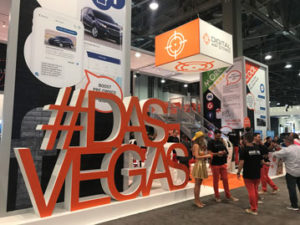
Speaking of Facebook, we spent a lot of time educating dealers on Facebook Marketplace, which uses Facebook Messenger as the primary communication tool. While dealers are excited about this new place to sell vehicles, it’s also another lead source that needs to be managed, so they expressed a need for tools to help them with that. We’ve seen that when it’s managed, Facebook Marketplace increases our dealerships’ pre-owned sales by more than 20%.
The dealers we spoke to were really excited to hear about our new AI messaging technology, Response Path, that uses our chatbots to communicate with car buyers and service customers, qualify them, and bring in a dealership team member when the time is right.
This makes sure all leads are given attention, while also not taking up valuable staff time answering basic questions. Staffing is usually a challenge, so reserving the top team members for the human interactions that can close more deals was well-received by dealers. Finally, we learned that our dealers love once-in-a-lifetime experiences, including being hosted by us at Wayne Newton’s private estate! The sold-out event treated thousands of them to a private performance, including having Wayne sing “Danke Schoen” from DAS to them. We were told this party was very much appreciated. We are already working on another one for next year’s NADA. 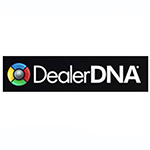 Doug Foss | CMO
Doug Foss | CMO
DealerDNA
What we learned: Need to automate information on each vehicle in inventory More than anything at the show, my team heard how difficult and time-consuming it is to take all of the different information on specials, incentives, and payments and work that into special pricing for each vehicle in inventory. The sheer amount of incentives, specials, and local pricing options alone is mind-boggling. It becomes a full-time job. And it doesn’t end there.
Once the dealer finally has winnowed down the specials to the right vehicles, they’re finding that posting those specials across all of the different marketing assets is even more stressful. Add on top of that the fact that specials change daily, and you have a huge headache that either takes a lot of staff time or a lot of money in agency time to support. I think as an industry we need to move toward technology that eases the stress and automates the process. Dealers can save money on their agency fees while marketing the very best price per vehicle in their inventory. It’s a win for the customer, and a win for the dealer.

Pete MacInnis | Founder and CEO
eLEND Solutions
What we learned: Need to meet customer expectations with end-to-end digital retailing Digital retailing was at the forefront of dealer’s minds at the 2018 NADA Show. Contrary to what the industry thinks, most dealers we spoke with viewed digital retailing as enhanced lead-generation tools, rather than as a means of allowing the customer to do more of the deal online.
With most digital retailing tools claiming to be “end-to-end” solutions, many dealers told us they weren’t seeing any real evidence to support such claims and that, while digital retailing products tout better consumer online experiences, they did not seem to offer any solutions that connected online to in-store processes seamlessly. Instead, most focused on replacing dealers’ processes rather than improving their existing ones — something dealers aren’t going to embrace any time soon, in our view.
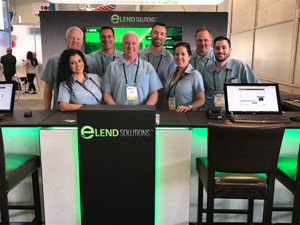
Dealer feedback reinforced our view that digital retailing must help dealers evolve (not completely alter their processes) to meet consumer expectations by removing bottlenecks, information disconnects, and other profit leaks in their existing in-store sales and finance processes.
It was clear that many vendors were showing pieces of the digital retailing puzzle, but lacked the collaboration required to deliver a true end-to-end solution that would help dealers evolve to meet consumer expectations. In the eLEND Solutions booth, we previewed our new platform (set to launch late Q2), which is designed to close that gap by delivering a better consumer buying experience while helping dealers sell more cars faster, and with increased profitability.
The reactions we got from both dealers and vendors alike validated everything we’re developing. Our new fintech platform is designed with collaboration in mind — extending efficiencies to auto lenders, and sales and finance platforms, through APIs. We believe vendor collaboration is required for true digital retailing to work and, ultimately, to garner dealer adoption.
